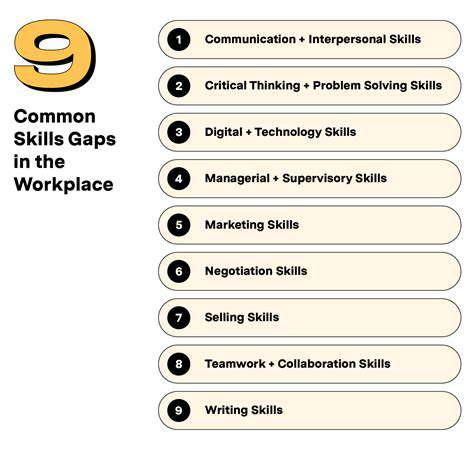Guide to Practicing Mindful Eating
Overcoming Challenges in Mindful Eating
Understanding the Barriers to Mindful Eating
Mindful eating, while seemingly simple, often faces significant obstacles. These barriers can stem from deeply ingrained habits, emotional triggers, and even societal pressures. For instance, the constant barrage of external stimuli, from advertisements promising instant gratification to the demands of a fast-paced lifestyle, can make it challenging to truly connect with the experience of eating. Many individuals struggle to detach from the automatic, often unconscious, process of consuming food, hindering their ability to fully savor each bite and appreciate the nourishment it provides.
Identifying Emotional Triggers
Emotions play a significant role in our eating habits. Stress, anxiety, or boredom can often lead to emotional eating, where we turn to food as a coping mechanism. Recognizing these emotional triggers is a crucial step towards mindful eating. Understanding the underlying emotions associated with specific eating patterns can help us develop healthier strategies for managing stress and cravings, thus preventing food from becoming a substitute for emotional fulfillment.
Cultivating Awareness of Hunger and Fullness Cues
Our bodies possess intrinsic signals that guide us toward optimal nourishment. However, over time, we often lose touch with these natural hunger and fullness cues. Mindful eating encourages us to pay attention to the subtle sensations in our stomach and body, recognizing the difference between physical hunger and emotional cravings. This heightened awareness allows us to eat when truly hungry and stop when comfortably full, promoting a healthier relationship with food.
Overcoming Distractions During Meals
In today's world, it's all too easy to be distracted during meals. The constant buzz of notifications from phones, tablets, and other devices can easily interrupt our focus on the food in front of us. Mindful eating encourages us to create a dedicated space and time for meals, minimizing distractions and fostering a sense of presence. This intentional approach allows us to fully appreciate the taste, texture, and aroma of our food, enhancing the overall dining experience.
Developing Self-Compassion and Patience
Mindful eating is not about perfection; it's about practice and patience. It's essential to approach this journey with self-compassion, acknowledging that slips and setbacks are a natural part of the learning process. Instead of judging ourselves harshly for occasional lapses, we should focus on gently redirecting our attention back to the present moment and the act of eating. This compassionate approach fosters a supportive and non-judgmental environment for cultivating mindful eating habits.
Integrating Mindfulness into Daily Life
Mindful eating is not confined to the dining table; it's a practice that can be integrated into all aspects of our daily lives. By cultivating mindfulness in other areas, such as our interactions with others, our work, and our leisure activities, we can develop a more holistic approach to living. This broader application of mindfulness fosters a sense of presence and appreciation in all aspects of our lives, extending the benefits beyond the act of eating and enriching our overall experience.
Integrating Mindful Eating into Your Lifestyle
Understanding the Principles of Mindful Eating
Mindful eating isn't about restricting food or following rigid diets. Instead, it's a practice that encourages heightened awareness of the entire eating experience. This involves paying close attention to the sensations in your body, the flavors and textures of your food, and the emotions you're experiencing during the meal. It's a conscious shift in perspective, moving from mindless consumption to a more present and appreciative experience of nourishment.
A key principle is to eat slowly and deliberately. This allows your body to register fullness cues more effectively, preventing overeating and promoting a healthier relationship with food. It also encourages you to savor each bite, noticing the subtle nuances of taste and texture.
Creating a Conducive Environment for Mindful Eating
Establishing a peaceful and distraction-free environment is crucial for mindful eating. Find a quiet place where you can sit comfortably and focus on the meal without interruptions from work, technology, or other responsibilities. Turn off the television, put away your phone, and create a space where you can truly be present.
Paying Attention to Your Body's Hunger Cues
Learning to recognize and respond to your body's hunger and fullness cues is a vital aspect of mindful eating. Instead of eating out of habit or emotional triggers, become aware of the physical sensations of hunger. Start by eating only when you are genuinely hungry, not when you're bored, stressed, or simply following a schedule. Notice the subtle changes in your stomach and energy levels.
Pay attention to the signals your body gives you as you eat. Are you feeling satisfied? Are you starting to feel overly full? Becoming attuned to these signals will help you eat in a way that nourishes your body and avoids overindulgence.
Savor the Sensory Experience of Food
Take the time to appreciate the colors, aromas, and textures of your food. Notice the way the food looks on your plate, the scent that fills the air as you prepare it, and the different sensations as you chew. Engage all your senses to create a more enriching and satisfying eating experience. This heightened awareness of the sensory details can transform a simple meal into a moment of profound appreciation.
Integrating Mindful Eating into Daily Life
Mindful eating isn't just about a specific meal; it's about cultivating a more mindful approach to food in general. Carry the principles of mindful eating into all your meals, whether it's a quick snack or a large family dinner. Practice paying attention to your body's cues, savoring each bite, and creating a peaceful environment for your meal. Making mindful eating a regular practice fosters a healthier relationship with food and promotes overall well-being.
By incorporating these principles into your daily routine, you can begin to cultivate a more harmonious relationship with food and your body.




![Guide to Learning [Specific Art Form]](/static/images/31/2025-05/FromSimpletoComplex3AStep-by-StepPaintingExercises.jpg)






![Best Free Resources for Learning [Specific Subject, e.g., Calculus]](/static/images/31/2025-05/PracticeProblemsandSolutionSets.jpg)